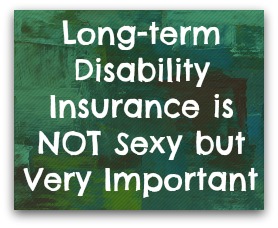
Why is this simple, straight-forward sentence so powerful? It’s powerful because it’s true and drives the sub-conscious perception of insurance in almost every American’s mind. Insurance is an afterthought.
When you purchase long-term disability insurance you are buying an intangible product, you’re buying a promise.
So when the average American thinks about long-term disability insurance their first thought is going be a tangible object, something they touch or hold that they can picture in their mind being replaced after an accident (i.e. home insurance & auto insurance).
Similarly most people understand that death is an inevitable event and which makes wrapping their brain around the idea of their family being financially rebursed after death through life insurance seem tangible.
However, in the case of long-term disability insurance, many Americans struggle to understand the significance of the coverage this product represents. Unlike death people have a hard time imagining the scenario that renders them disabled. What these individuals do not understand is that one in seven US workers will be disabled for five years or more before retirement (from the Health Insurance Association of America, published in the New York Times).
Look around your office, count yourself and six co-workers. One of you is going to be disabled for five years. If you are the one that becomes disabled, can your family sustain that type of long-term reduction in income?
So, if these statistics are true, why don’t more people have a long-term disability insurance policy?
Easy, Price!
Relative to the most popular life insurance product, term life insurance, disability insurance is expensive.
Its much easier to play the, “Its not going to happen to me” card than it is add an expense to the household budget. However, if you are the one in seven, that monthly expense becomes your greatest asset!
There are ways to to mitigate the expense. A traditional long-term disability insurance policy covers an individual for 60% of monthly income, starting three months after the disability occurs up to age 65.
Each one of these factors can be adjusted to make the policy cost more manageable. If you could survive on 40-50% of your monthly income instead of 60% then decrease the benefit you would receive. If your employer offers short-term disability extend the waiting-period out 6-12 months. Lastly, most disability policies will allow you to choose how long you would like to receive the disability benefit. It may be a good idea to look into policies that offer a benefit for 5, 10, 15 years or till age 62 instead of the standard age 65.
For more information read this laundry list of disability statistics that will blow your mind at ProtectYourIncome.com.
If you’re interested in a long-term disability insurance policy for you or someone you love and would like more information give a Murray Group specialist a call at (518) 456-6688 or you can click here to contact us via email.
